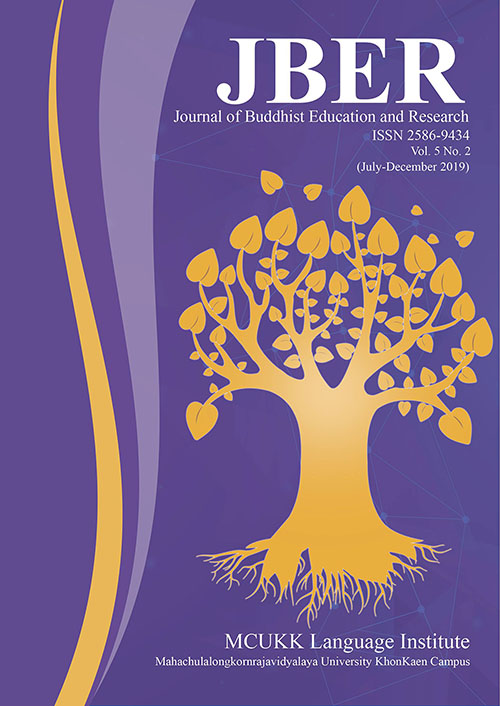TOWARD A MODEL FOR INCREASING EFFICIENCY IN COLLECTING VALUE ADDED TAX
Keywords:
Efficiency increasement, VAT collection, Deduction of expenses as necessary and appropriateAbstract
The objective of this research is topredict the value added tax (vat)collection that may occur as a result of allowing taxpayers to deduct expenses as necessary and appropriate in that tax year and recommended for improvement of the Revenue Code about the deduction of personal income taxpayers. In prediction the result of vat collection.Used the idea thatif the taxpayerscan deduct expenses equal toexpenses as necessary and appropriatewith a tax invoice.Makesthe state to increase vat collectionand causing the country's income to increase.This research uses secondary data analysisand the examples of data that5 main types of tax collected by the Revenue Department,population dataand labor information population age, income- expense budget information, the amount of taxpayers who submit forms the personal income tax system.Time series since year B.E.2013-2016.Use the data or statistics collected to procure data relationships.To show the connection of dataand analyze the possibilities of economics and management.
The research found that:
Toward A Model for IncreasingEfficiency in VAT that Missing Value Added Tax Rate = (Estimated VAT–VAT Collected)* 100 The forecastshow thatIf there is a request for tax invoice when spending of goods or service every time from the vat registrant.All of them make increase vat collectionas the result of the analysis.There is a vat rate that missing as expected. In year 2013 about 55.60%, in 2014 about 56.79% and in 2015 and 2016 about 58.32% and 59.54% respectively. Consistent with the shopping tax measures at the end of 2016 takes only 18 days. But canmakes the state to collectedvatJanuary 2017 up to number 245, 244 million bahtincrease from January 2016 same period last yearreceived 3,688 million bahtor 1.5%. Reflects thatstates should adjust policiesgranting deductionsinto real actionfor increase the efficiency of vat collection long-term and sustainable.
References
กรมสรรพากร. (2562). การปรับปรุงการจัดสรรรายได้ประเภท VAT ให้แก่องค์การบริหารส่วนจังหวัดให้เป็นธรรม และให้ภาคประชาชนมีส่วนร่วม กองวิชาการแผนภาษี. กรุงเทพฯ: กระทรวงการคลัง.
_______. (2560). ผลการจัดเก็บภาษีสรรพากร ปีงบประมาณ 2556-2559. กองวิชาการแผนภาษี. กรุงเทพฯ: กระทรวงการคลัง.
_______. (2560). ข้อมูลผู้ยื่นแบบแสดงรายการ และ ยื่นแบบชำระภาษีในระบบภาษีเงินได้บุคคลธรรมดา ปี 2556-2559. กรุงเทพฯ: กระทรวงการคลัง.
ภัทรกร เปี่ยมทองคำ. (2555). ปัญหาการหักค่าใช้จ่ายตามประมวลรัษฎากร ศึกษากรณีภาษีเงินได้บุคคลธรรมดา. วิทยานิพนธ์นิติศาสตรมหาบัณฑิต สาขาวิชากฎหมายเอกชนและกฎหมายธุรกิจ. บัณฑิตวิทยาลัย: มหาวิทยาลัยธุรกิจบัณฑิตย์.
สุมาลี สถิตชัยเจริญ และคณะ. (2554). การศึกษาผลของภาษีมูลค่าเพิ่มต่อการสร้างความเป็นธรรมในการกระจายรายได้และเศรษฐกิจของประเทศไทย. กรุงเทพฯ: สำนักงานเศรษฐกิจการคลัง.
สำนักงานเศรษฐกิจการคลัง. (2560). งบประมาณรายรับ-รายจ่าย ของรัฐบาลปีงบประมาณ2556-2559. กรุงเทพฯ: กระทรวงการคลัง.
สำนักงานเลขาวุฒิสภา. (2560). แนวทางการปฏิรูปโครงสร้างภาษี และระบบบริหารจัดเก็บ เพื่อเพิ่มประสิทธิภาพ การจัดเก็บรายได้แผ่นดิน. กรุงเทพฯ: สำนักงานเลขาธิการ สภานิติบัญญัติแห่งชาติ.





